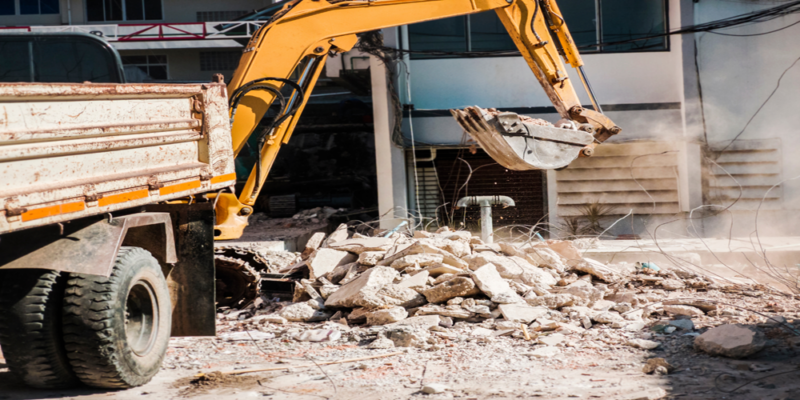
Thermal Imaging for Buildings
Thermal imaging is revolutionising how we inspect and maintain buildings. By using infrared cameras to detect hidden issues such as heat loss, moisture intrusion, and electrical faults, this technology is becoming essential for improving building performance, reducing energy costs, and enhancing occupant safety.
In this guide, we’ll explore how thermal imaging works, its key benefits, and how it’s applied across residential, commercial, and industrial buildings. We’ll also look at the latest advancements in technology—and how you can implement it effectively for your next building inspection.

What is Thermal Imaging?
Also known as thermography, thermal imaging captures infrared radiation (heat) emitted from objects. Thermal cameras convert this data into images where different colours represent temperature variations. These images help identify “hot” or “cold” spots that point to potential issues—many of which are invisible to the naked eye.
Why Thermal Imaging Matters for Building Inspections
1. Improves Energy Efficiency
Thermal imaging can quickly spot areas where buildings are losing heat—through poor insulation, drafty windows, or unsealed gaps. Fixing these issues improves indoor comfort, reduces energy consumption, and lowers heating and cooling bills.
2. Enables Preventive Maintenance
From overheating circuits to failing HVAC systems, thermal imaging identifies faults early—before they cause serious problems or safety hazards. Regular thermal surveys help you schedule timely repairs and prevent costly downtime.
3. Detects Hidden Moisture
Water leaks and moisture buildup can cause serious structural damage and health risks due to mould. Thermal imaging pinpoints damp areas behind walls or ceilings so you can take corrective action before it spreads.
4. Supports In-Depth Building Assessments
Whether you’re buying, managing, or upgrading a building, thermal imaging provides non-invasive insights into the structure’s condition. It enhances energy audits, pre-purchase inspections, and facility maintenance plans with reliable, visual data.
Applications Across Building Types
Residential Homes
Thermal imaging helps homeowners identify insulation gaps, air leaks, and hidden dampness. It’s a valuable tool for improving comfort, cutting energy costs, and prioritising renovation projects.
Commercial Properties
For offices, retail spaces, and large complexes, thermal surveys are used to assess HVAC efficiency, electrical panels, and roofing systems. Early detection of faults ensures business continuity and reduces repair costs.
Industrial Facilities
In industrial settings, thermal imaging supports machinery maintenance by detecting overheating or worn-out components. It helps prevent failures, improve safety, and maintain operational efficiency.
Cutting-Edge Developments in Thermal Imaging
High-Resolution Cameras
Today’s thermal cameras offer superior clarity, enabling more precise detection of even minor thermal anomalies. For building inspections, a minimum resolution of 640 x 480 is recommended for reliable results.
Drone Integration
Drones equipped with thermal cameras can safely survey large rooftops, exteriors, or hard-to-reach areas—without scaffolding. This cuts down inspection time while improving safety and coverage.
AI and Machine Learning
Modern systems now include AI capabilities that automatically analyse thermal images, detect patterns, and even predict future issues based on past data—making inspections faster, smarter, and more proactive.
How to Implement Thermal Imaging for Your Building
Implementing an effective thermal inspection involves a few key steps:
1. Choose a Certified Provider
Always hire a company with proper qualifications. At APT Sound Testing, our engineers are Level 3 certified, the highest industry standard. This ensures you receive accurate, expert-level reporting and recommendations.
2. Use High-Quality Equipment
Make sure your provider uses professional-grade thermal cameras. For most buildings, a camera with at least 640 x 480 resolution and high thermal sensitivity is essential for detecting subtle issues.
3. Conduct Comprehensive Inspections
We perform detailed thermal surveys covering insulation, windows, doors, HVAC units, electrical systems, and more. Using trend analysis software, we track changes over time to detect developing issues.
4. Get Detailed Reports and Analysis
Following each inspection, we provide an in-depth report with thermal images, descriptions of issues, and expert recommendations for next steps—making it easy to plan repairs or upgrades.
In Summary: Thermal Imaging as a Tool
Thermal imaging is an invaluable tool for anyone responsible for a building—whether you’re a homeowner, property manager, or industrial operator. It enhances energy efficiency, improves safety, and helps prevent costly failures.
To get the best results, work with experienced professionals using the right technology.
Ready to Book a Thermal Survey?
Get in touch with APT Sound Testing today:
Call us on 07775 623464
Or email info@aptsoundtesting.co.uk
Let us help you make your building safer, smarter, and more energy-efficient.


